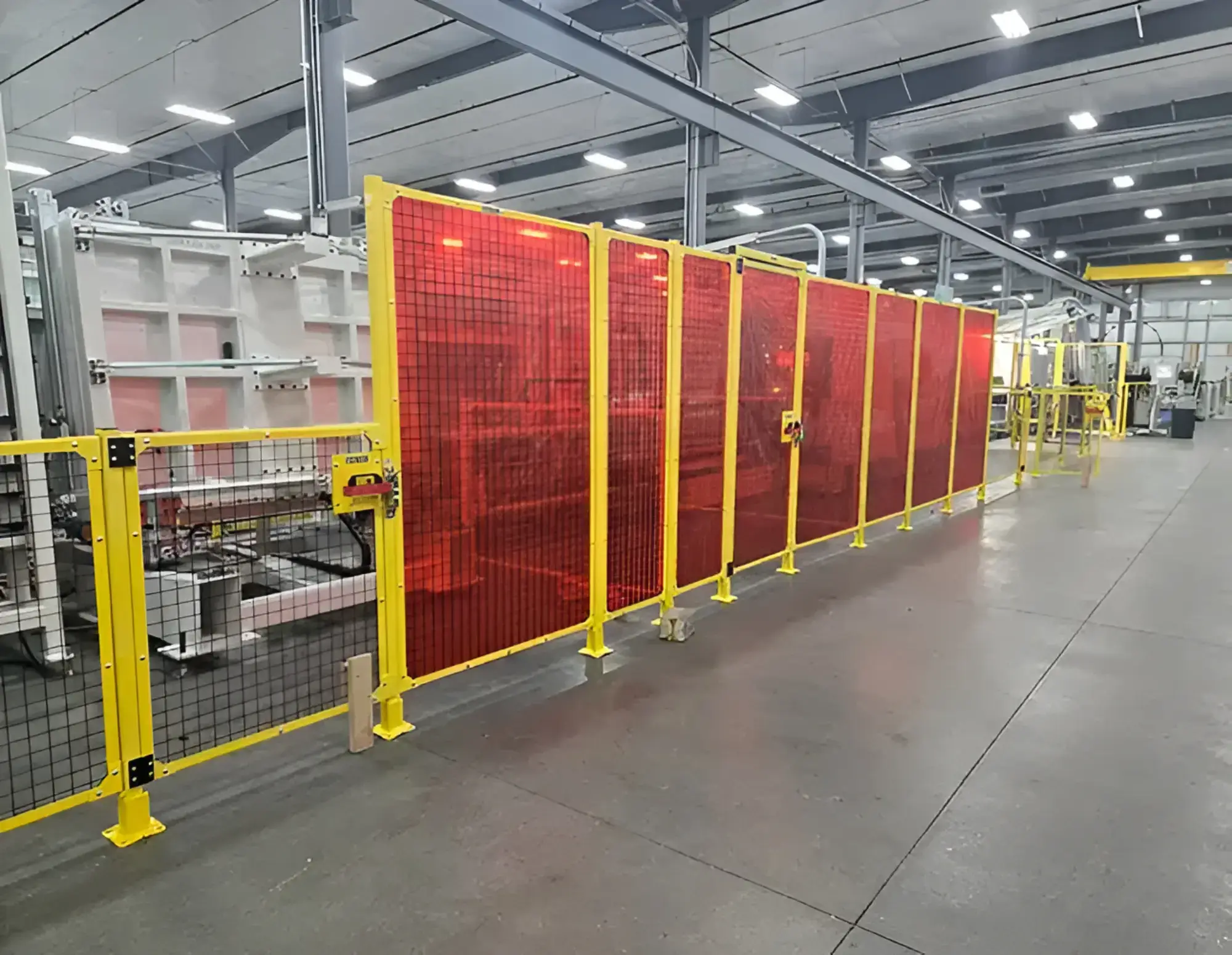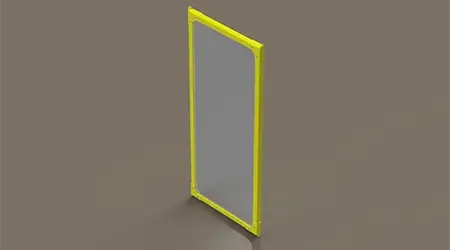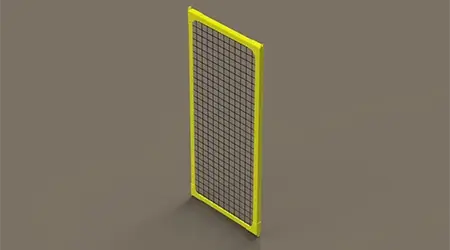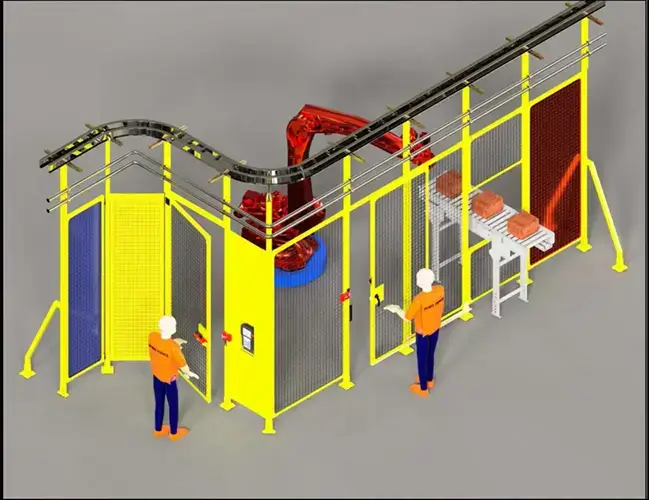

Machine guarding is the last line of defense against workplace accidents, and an important principle of machine guarding is that it should not make it harder for workers to do their jobs. One way that machine guarding can become ineffective is when the wrong materials are used. For example, clear panels can become scratched, foggy, or dirty; solid panels can be too opaque for the application; and mesh screens could let sparks and flying debris through to people working or standing nearby.
When evaluating the materials used in your guarding panels, consider whether visibility is required, the environment in which the panels will be installed, and the tasks that robotic systems are expected to perform, as well as the hazards they may create for your workers.
There are four primary material options for machine guard panels: solid steel, polycarbonate, weld screens, and black wire mesh. This blog examines the advantages and disadvantages of each material option, as well as their respective use cases.

Solid steel provides excellent impact resistance and blocks sparks, smoke, fumes, and airborne debris. They also help form an effective barrier to shield quiet areas of a factory, reduce noisy functions like fettling of forgings, and block bright lights like lasers.
Unlike mesh, steel panels stop objects from being pushed through and into the mechanisms or devices being guarded.
Another strength is the privacy they provide, which can prevent people from viewing confidential or proprietary processes. However, the downside is that they prevent any visual process monitoring, although some manufacturers get around this by installing a camera in the enclosure and mounting a screen on the panel. However, even this solution can still slow down machine setup and loading.
Solid steel panels can also serve an alternative function as display boards for important process or operational information.

Not to be confused with acrylic/Plexiglass, Lexan is a clear polycarbonate material formed into sheets for machine guarding panels. Lexan has exceptional impact resistance, good optical clarity, and a high level of chemical and UV resistance. It’s also significantly lighter than glass.
The two major advantages of Lexan are its transparency and impact resistance, which make it a good choice for guarding applications where it’s important to see what’s happening inside the machine or equipment. Additionally, as a solid barrier, it blocks dust, sparks, and fumes, keeps splashed liquids inside the enclosed space, and reduces noise transmission.
A disadvantage of Lexan panels is that they can become dirty over time and require cleaning. If not done with the right materials, this can result in scratches that permanently reduce visibility.

Weld screens are composed of a heavy-duty fabric that’s stretched taut, although some variants use heavy-duty plastic. They are designed to shield individuals from welding arcs and sparks. Being solid, they also protect against fumes and some flying particles. However, they don’t offer the same level of impact resistance as Lexan or solid steel.

Black mesh panels are used in many automated systems throughout manufacturing. They have the advantage of providing visibility and allowing airflow while still blocking access to moving equipment like robots and conveyors. They will also catch any larger flying objects, such as parts or tools that escape from robot grippers. Mesh geometry must also meet OSHA requirements for the size of the object or body part that can pass through.
The disadvantage of black mesh panels is that they will not block dust, fumes, or small particles. Neither will they shield workers from welding arcs and other bright lights.
ROBO FENCE® designs and builds custom guarding systems that integrate seamlessly into manufacturing environments and meet the specific needs of robotic, conveyor, and safety applications. Our complete line of guarding options includes posts, panels, gates, and complete gate assemblies.
As the last line of defense against workplace accidents, machine guarding has to be done right. We have over 25 years of experience in the industrial fencing industry and can help you meet all practical and regulatory machine guarding requirements. Contact us today to learn more or to schedule a project consultation.


Contact one of our experts to get started on your next machine guarding project. Until then, browse our complete catalog to see our offerings.

Square Group LLC
Proud Manufacturers and Suppliers of ROBO FENCE®